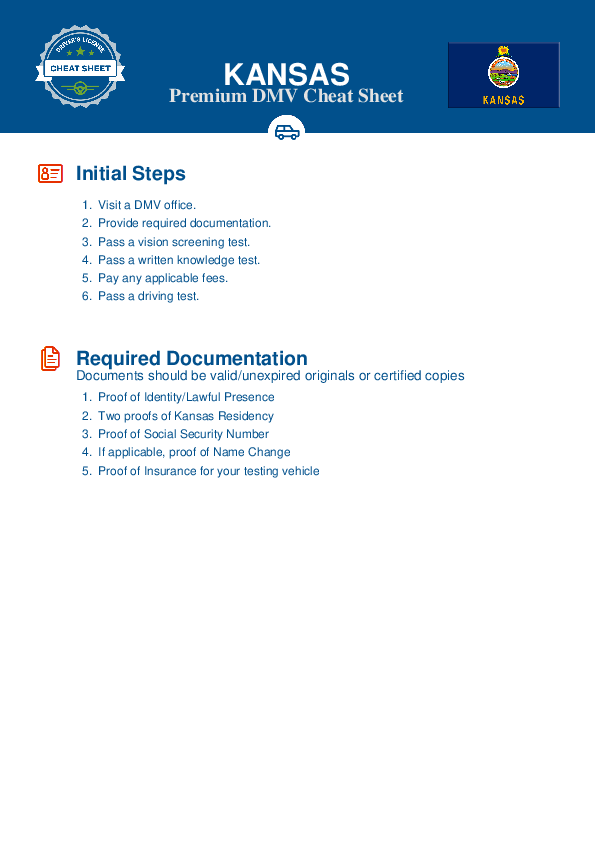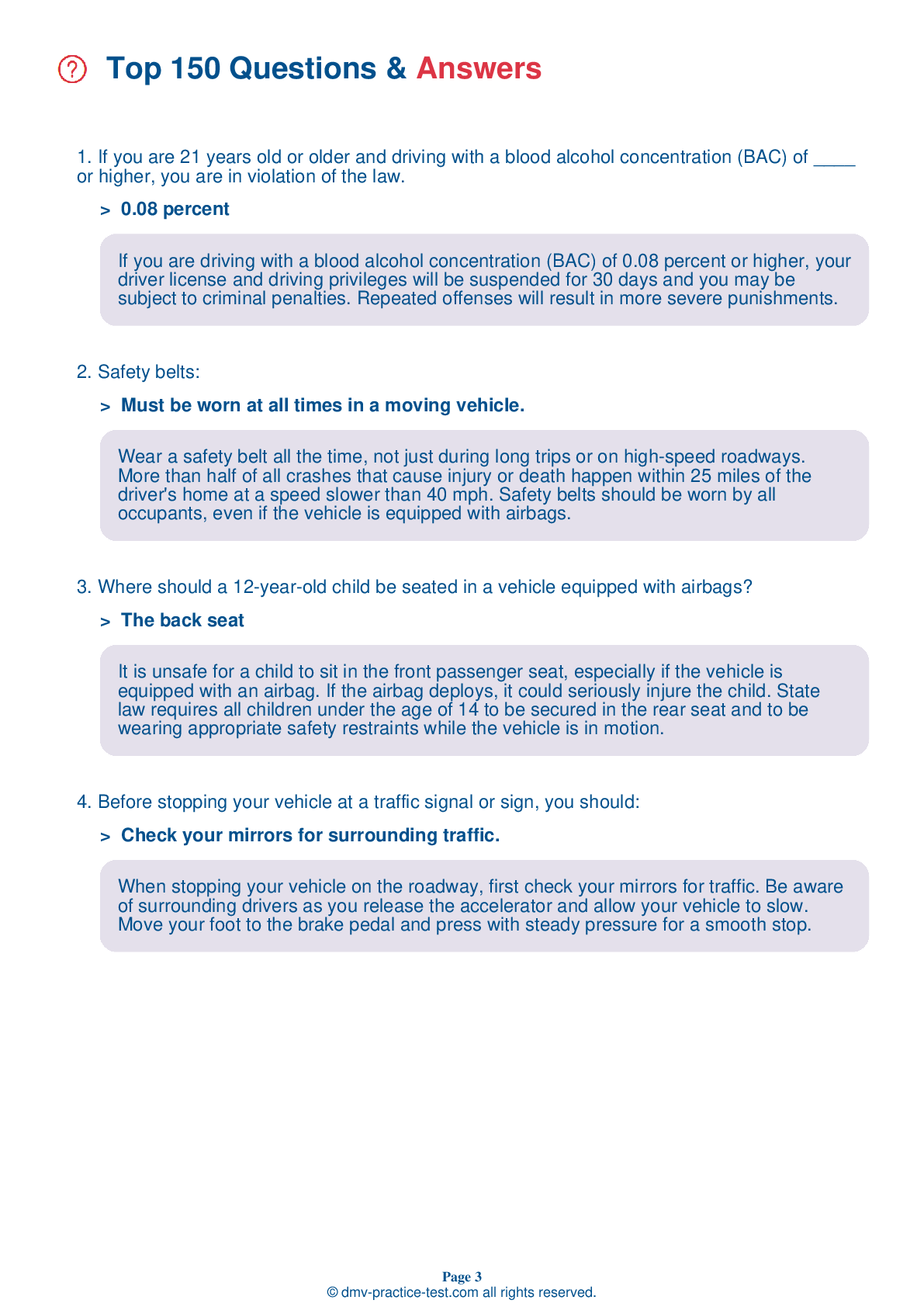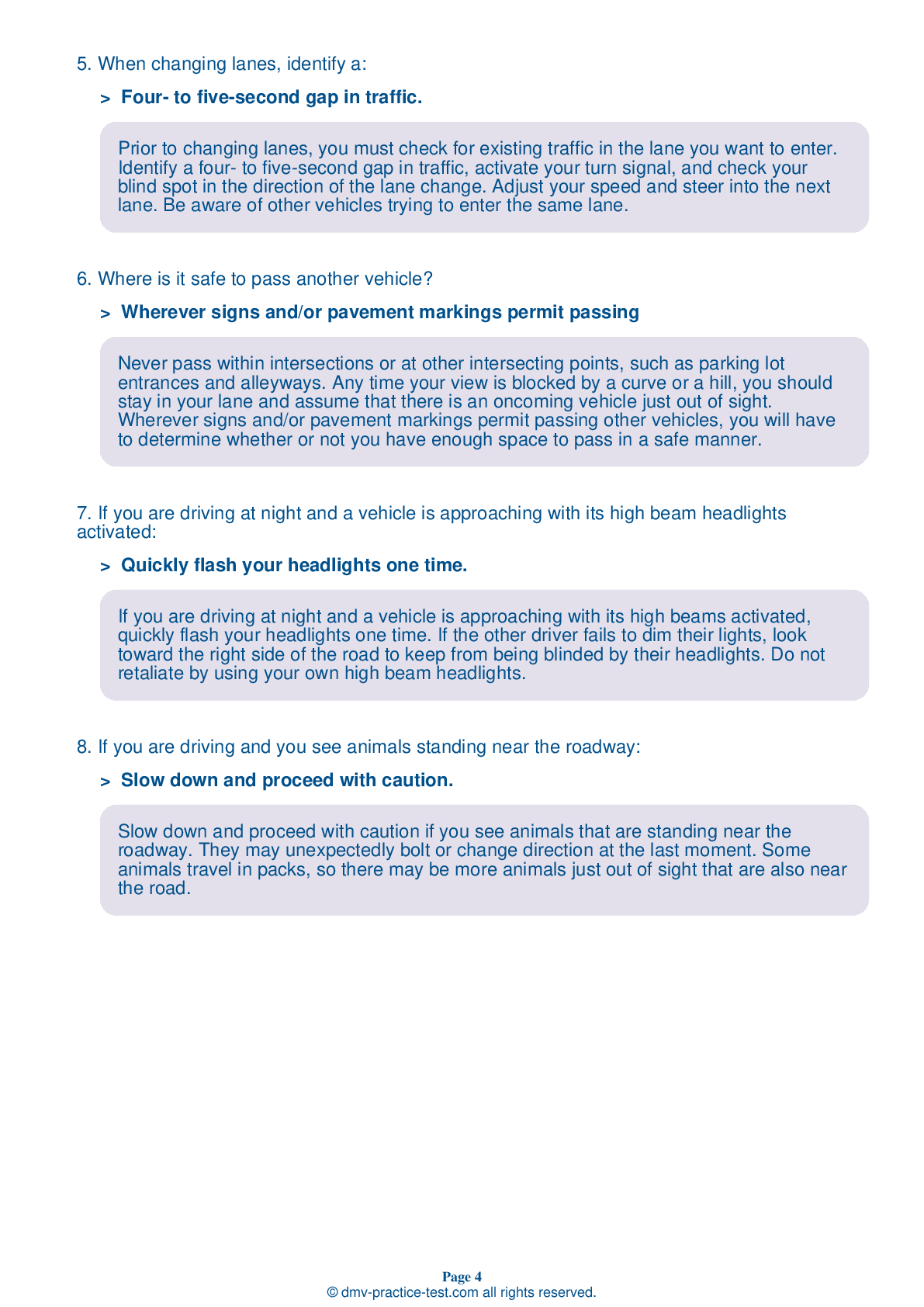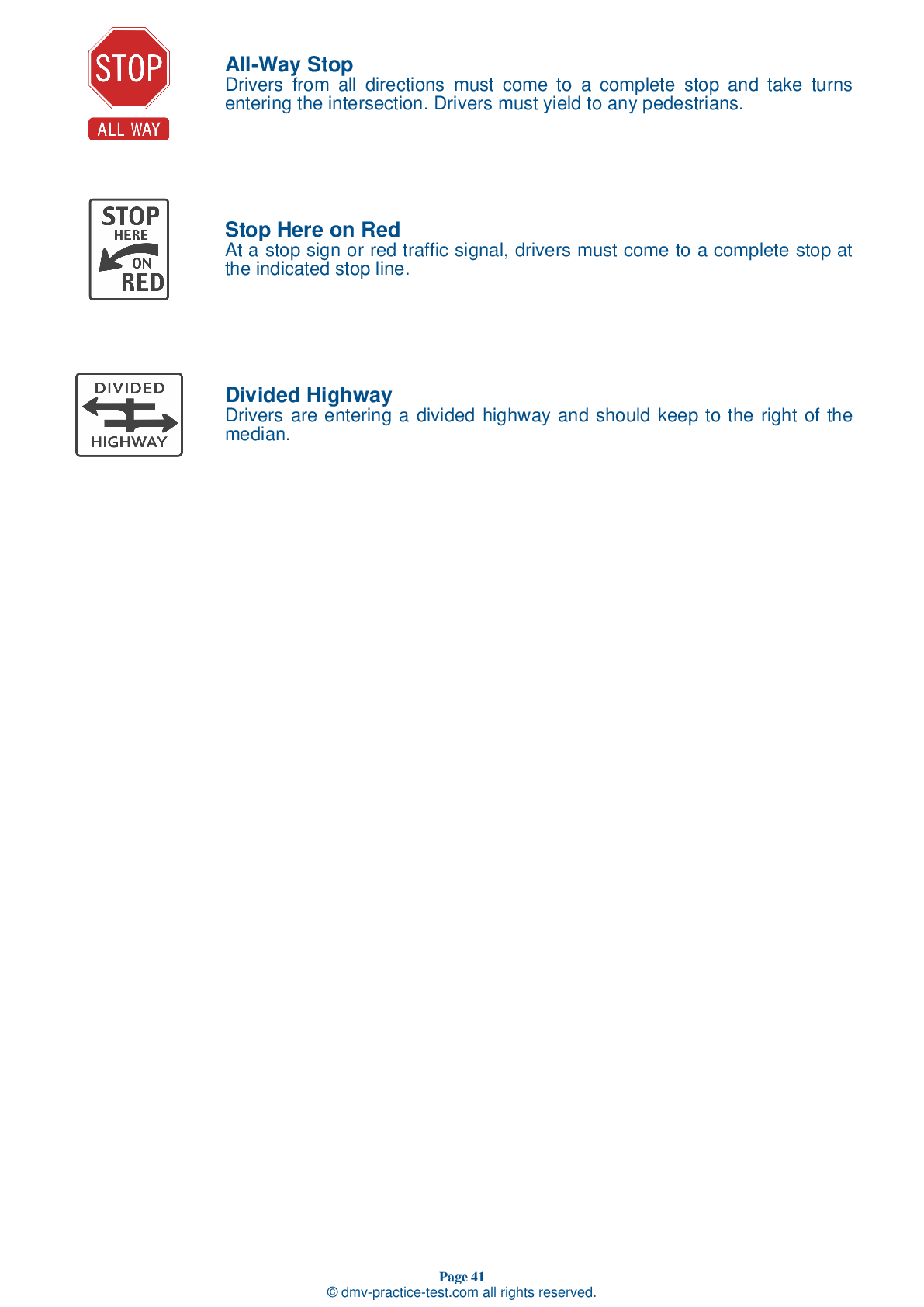FREE Kansas DMV Practice Test #4
In Kansas, the DMV practise tests have been revised for January 2025. It includes questions based on the Kansas Driver Handbook's most essential traffic signals and regulations for 2025. Use actual questions that are very similar (often identical!) to the DMV driving permit test and driver's licence exam to study for the DMV driving permit test and driver's licence exam.
On the practise exam, each question gets a tip and explanation to help you remember the concepts. The written component of the official Kansas DMV test will include questions about traffic rules, traffic signs, and driving statutes, as well as information from the Driver Handbook.
To obtain a passing grade, you must correctly answer 20 of the 25 questions. Take our DMV practise exam to help you prepare for your Kansas instruction permit or driver's licence.
The DMV exam is available in several languages.
Using any kind of testing assistance will result in an automatic fail, and the DMV may take additional action against your driver's licence, so stay away from it.
1 . The center of the roadway is marked with one solid yellow line and one broken yellow line. If the broken yellow line is directly next to your traffic lane, it means:
When there is a solid yellow line and a broken yellow line in the center of the road, passing is permitted from the side of the road next to the broken line.
2 . If oncoming headlights are blinding you while you are driving at night, you should:
If the headlights of an oncoming vehicle are blinding, glance toward the right edge of the road instead of looking directly ahead. This should keep your vehicle safely on the road until you pass the oncoming vehicle.
3 . Should you always drive more slowly than other traffic?
You must drive more slowly than usual when there is heavy traffic or bad weather. However, if you block the normal and reasonable movement of traffic by driving too slowly, you may be cited.
4 . Before you enter an intersection, you should look to your:
Before you enter an intersection, look to both the left and right for approaching vehicles or crossing pedestrians. Look to your left a second time, as vehicle approaching from your left will be closer than those approaching from your right. Look across the intersection before you start to move to make sure the path is clear all the way through.
5 . At a railroad crossing, you must:
You must approach all railroad crossings with extreme caution and cross only when you know that no train is coming from either direction. Be aware of vehicles that must stop at all railroad crossings, such as school buses and trucks carrying hazardous materials.
6 . At intersections with a "Yield" sign, you must:
At a yield sign, you must slow down or stop, if necessary, and give the right-of-way to crossing or merging vehicles. Yield the right-of-way to any cross traffic that is close enough to cause conflict.
7 . Your license will:
Your license will expire on your birthday. At least 30 days prior to the expiration of your license, the Division of Vehicles will mail either a notice of expiration or a renewal application to your home address.
8 . A flashing red traffic light at an intersection means:
A flashing red light at an intersection means drivers are required to come to a complete stop, yield to traffic and pedestrians, and proceed when the way is clear. The same is true at a stop sign.
See the exact questions that will be on the 2025 Kansas DMV exam.
99.2% of people who use the cheat sheet pass the FIRST TIME
LT gives us an insight on how the cheat sheet provided her with all the study questions she needed before taking her test.
Joe initially studied with the handbook and failed his test, he eventually found us online, studied and pass his test the first time around.



